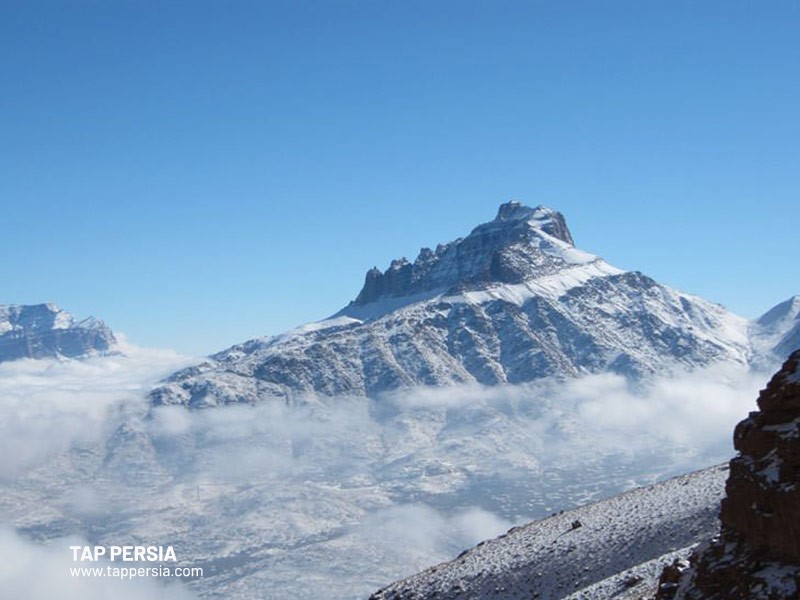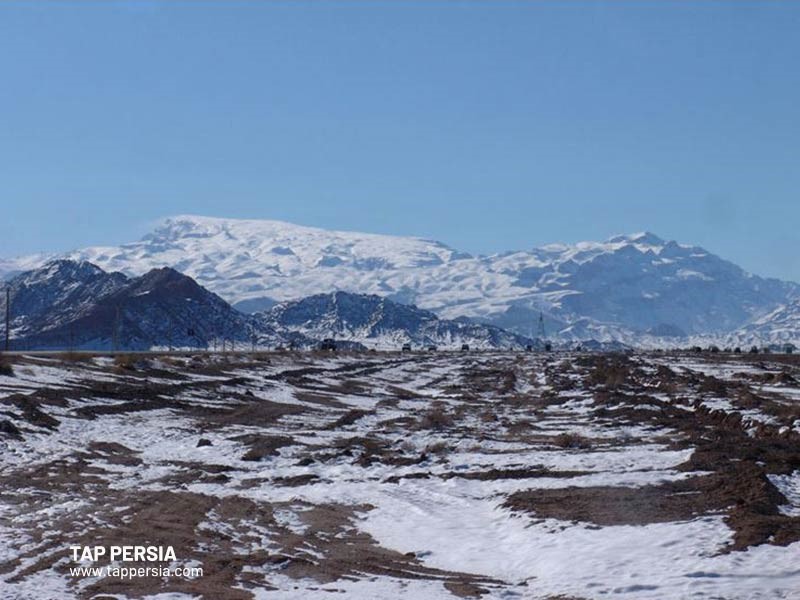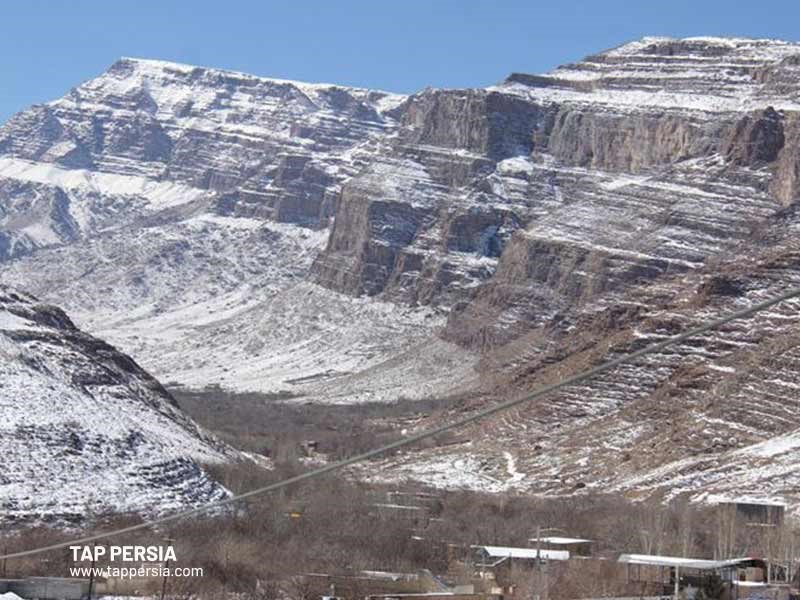
Mountains are considered to be one of the most diverse tourist attractions, which have occupied most of the leisure time of tourists in mountainous areas since ancient times. People have increased their interest and request to do exciting sports and visit mountain ecosystems and their attractions. Here we are going to review some information about a mountain peak in Yazd, Shirkooh. So if you are interested in climbing this mountain and experiencing an exciting journey join us to learn more about this beauty.
About Shirkooh Mountain
Shirkooh is the highest peak in Yazd province with a height of 4075 meters above sea level. This vast mountain range is actually part of the Zagros mountain range. Bagh Mehdi village is located in the west, Bardestan village is in the southwest, Deh Bala village is in the east, and Dareh Shir village is also located in the northwest of Shirkuh peak.
Shirkooh is located in the south of Yazd city. This peak is considered one of the 1515 most prominent peaks in the world. Considering its height, 4075 meters, you can climb to its peak in one day. Shirkooh is one of the famous places of Yazd, where there are many routes to climb, and among them, we can mention Sosan Valley, Bidkabkan, Layakhchal, and Abriz. Also, on top of Shirkuh, there are drinking water springs.
Why Is It Called Shirkuh?

To say why, let’s see what it means; in Persin “Shir” means “lion”, and “Kuh” means “mountain”. So it means Mountain Lion. There are two reasons for the name Shirkuh of Yazd; Firstly, the peak of this mountain is covered with snow during most of the year and has the color of a white lion. and secondly, due to its resemblance to a sleeping lion on its hands. This name makes one believe that, as if in the distant days, there was really a lion with a beautiful mane and it has gone to sleep in this spot.
To see this magnificent mountain, people go to the summer village of Deh Bala; A village that is always green and cool with kind and accommodating people who have never left this white lion alone despite the severe winter cold.
Shirkuh Supplies Water to Yazd
Shirkuh is the water supplier of qanats in Taft and Mehriz and also Pesht-e Kooh and Pish-e Kooh villages, as well as a part of the underground water of Yazd city. Furthermore, the rainfall in the surrounding cities is also due to the role of Shirkuh in interfering with the escape of rain-producing clouds. In general, mountains are considered the richest centers of biodiversity, and Shirkoh is the only safe habitat in Yazd province during periodic droughts.
The Geological Features of Shirkuh in Yazd
Shirkuh Yazd has a granite base that geologists have not reached an agreement about its age yet. More than 1000 meters of dolomite and limestone belonging to the Cretaceous period are placed on these granites. A huge part of these limestone formations, especially in the southern parts of Yazd Shirkuh, has been eroded and destroyed.
Under the cretaceous dolomite and limestone sediments, scattered reddish multilayers, and on the southern edge of the mountain, the outgoing igneous formations can be seen, which belong to the late third and fourth periods; Of course, along with the formation of these sediments, layers of travertine have also been formed. It should be mentioned that among the geological phenomena of Shirkoh, river terraces have attracted the most attention of visitors.

The Way to Climb Yazd Shirkooh Peak
Begining
At the end of Deh Bala village and next to Sheikh Alishah neighborhood mosque, the starting point of the ascent to the Shirkuh peak of Yazd begins. You can drive to this spot until one kilometer further. But from there on you need to go on foot. From this point, the climbing height is about 2500 meters. On the way up, there are 3 springs that are always full of water, and tasting their cool and clear water provides energy to continue your way. The first spring is located next to tall Tabrizi trees and has made this area famous as Tabestan Khaneh ( summer house) among the locals.
Najib Valley
The entire route is horizontal by the side of the stone escarpment which is totally Recognizable and clearly marked. And its end reaches the Najib valley. Only in Najib Valley, due to its rocky nature, the path is a little unclear. The path through this valley ends to the Mountain huts or shelter which, of course, is the most difficult part of the path. At the end of the valley to the west, it is completely transverse and has a slight slope.
Mountain Shelters
There are 3 shelters equipped with toilets, one of which is newly made of metal. It has 3 sections suitable for 40 to 45 people to sleep. The other 2 shelters are of concrete. The large one has a capacity of 20 people and the small concrete shelter has a capacity of 8 people. There are blankets available in both. An they are warmer and more insulated than the metal one.
Shirkooh Peak
The continuation of the ascent to the peak of Shirkuh, Yazd, from the shelter to the peak, is a well-defined path with a gentle slope. And only the very high wind speed and the distance of 5.4 kilometers covered in snow make the journey a bit challenging. But reaching the peak removes all the fatigue from a person’s body, and the joy of conquering the peak is indescribable.
Mountain Condition

The shelter of Shirkoh is located on the ridge and due to the possibility of nightfall in the middle of the program, the degree of difficulty of climbing to the peak of Shirkoh is easier compared to other peaks of 4000 meters. Depending on the weather conditions, it is a moderate to relatively difficult mountain. The main ascent route of Shirkuh is suitable for people with the ability to climb the mountain from 9 to 18 km on rough nature paths such as challenging trails and steep paths.
But the plan to climb the Shirkoh peak from other routes such as the southern wall route has more difficult conditions. The path to climb the south wall is more difficult and sometimes exhausting in winter due to the presence of rocks and the lack of facilities such as springs and shelters on the way.
When to Climb
The climate of Shirkuh peak is perfect for climbing in spring, autumn and summer. Shirkooh usually has a cold and snowy winter, but the winter ascents of Shirkoh are far less dangerous than the winter ascents of other peaks of the same height in Iran. Climbing Shirkuh in early spring is a combination of beautiful and green mountain scenery and good temperature.
In the first half of spring, you will have the most balanced temperature and the best watering situation in the springs, so that you have the chance to see the waterfall on the way. However, fortunately, even in late autumn and before the rains, there is a problem in terms of water and springs that lose their water.. In general, from April to November, the climb to the peak of Shirkoh is simple and pleasant. Start the summer ascent to Shirkooh very early in the morning so that you have reached the heights when the weather warms up.
Camping or Night Stay
In Sheikh Alisha neighborhood in Deh Bala village, which is located on the way up to Shirkuh peak, you can stay and spend the night in the Central Mosque or Zeynabiyeh Mosque, if you make a prior arrangement. A mountaineer’s house has also been established by one of the residents next to the Zeynabiyeh Mosque so that mountaineers can spend the night in the morning and have a pleasant climb by renting a room there.
If the weather conditions are favorable and you intend to camp in the village, the best camping choice is next to the spring of Shir and Khurshid at the beginning of the way up to Shirkuh. It’s a great space to park your car and camp.



Comment (0)